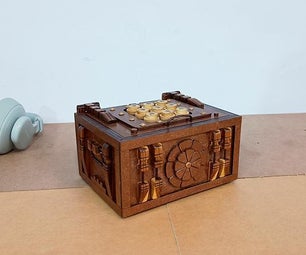Introduction: Creating a Low Budget Composting Toilet
For a number of years, we have used a composting toilet (often called a Joe Jenkins Sawdust Toilet) when our water / sewer solution would not support a flush toilet. up to 40% of our water usage is used to turn fertilizer into sewage, by mixing it with drinking water. Then we go out and buy chemical fertilzers to fertilize our plants. This seems idiotic to me. Here is a sanitary way to turn "waste" into fertilizer. It starts with the collection device, and ends with the composting device designed to make fertilized dirt. There is no "waste".
You can get the complete bucket and lid - http://goo.gl/6zOny
Or provide your own bucket, and just get the lid - http://goo.gl/yF9M1 or http://goo.gl/9VHYO4
You can get the complete bucket and lid - http://goo.gl/6zOny
Or provide your own bucket, and just get the lid - http://goo.gl/yF9M1 or http://goo.gl/9VHYO4
Step 1: Cover Material
What makes this sanitary and earthy smelling instead of just a bucket of crap is the cover material.
Cover material can be grass clippings, Peat Moss, Coconut Coir (recycled coconut fibers), ground up corn cob, or even sawdust (raw wood preferred, not kiln dried). Our favorite is the Recycled Coconut Coir (a waste product from the food industry) and the ground corn cob.
Put about 3" in the bottom of the bucket before use to act as a liquid absorbent and after every deposit, cover with another inch or so.
http://goo.gl/xZAyT
Some folks use a plastic bag liner, especially when camping. This makes it easier to keep the bucket clean, but harder to compost, as the bag needs to be disposed of. Biodegradable bags exist, but still problematic for composting. Perfect for camping in the woods.
Cover material can be grass clippings, Peat Moss, Coconut Coir (recycled coconut fibers), ground up corn cob, or even sawdust (raw wood preferred, not kiln dried). Our favorite is the Recycled Coconut Coir (a waste product from the food industry) and the ground corn cob.
Put about 3" in the bottom of the bucket before use to act as a liquid absorbent and after every deposit, cover with another inch or so.
http://goo.gl/xZAyT
Some folks use a plastic bag liner, especially when camping. This makes it easier to keep the bucket clean, but harder to compost, as the bag needs to be disposed of. Biodegradable bags exist, but still problematic for composting. Perfect for camping in the woods.
Step 2: Composting
When the bucket is about 3/4 full, take it outdoors and dump it into your compost bin. Again, you can cover with dry materials, this time lawn / garden cuttings, to eliminate smells and flies. You can build your own compost bin with a 55 gallon drum (with aeration holes), a stack of tires with the sidewalls cut out, pallets, or purchase one already made.
http://goo.gl/DvMIF
http://goo.gl/DvMIF
Step 3: Using the Compost
After a year of composting, the resulting compost is perfectly safe to use in the vegetable garden. This is the part that makes most people shudder, but you can't catch diseases you don't already have, and after this amount of time, there's nothing pathogenic left, so there's nothing to fear. If you still have fears, use it for flowers, trees, and shrubs.
Read more about this process at http://www.weblife.org/humanure/ or
http://goo.gl/8dowv - Humanure Handbook (Jenkins)
http://goo.gl/WWch5Y - Toilet Papers (Van der Ryn)
http://goo.gl/WTTXoh - Holy Shit (Logsdon)
Read more about this process at http://www.weblife.org/humanure/ or
http://goo.gl/8dowv - Humanure Handbook (Jenkins)
http://goo.gl/WWch5Y - Toilet Papers (Van der Ryn)
http://goo.gl/WTTXoh - Holy Shit (Logsdon)

Participated in the
Craft Contest

Participated in the
Great Outdoors Contest











